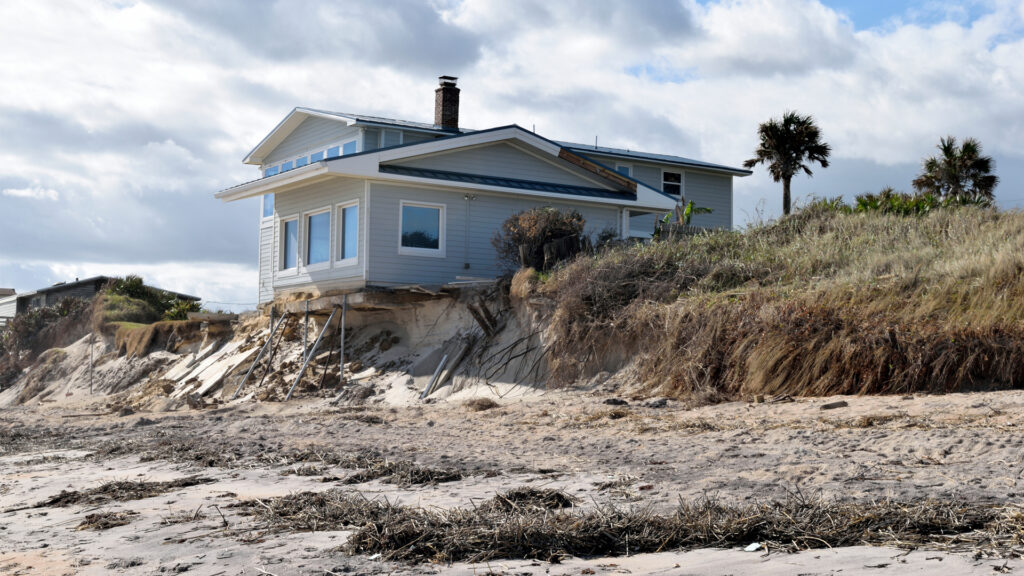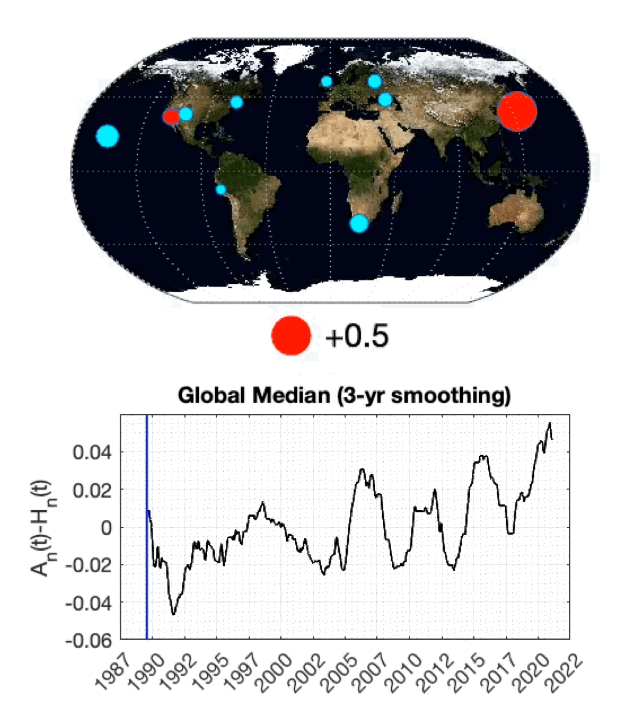By Richard Aster, Colorado State University
As oceans waves rise and fall, they apply forces to the sea floor below and generate seismic waves. These seismic waves are so powerful and widespread that they show up as a steady thrum on seismographs, the same instruments used to monitor and study earthquakes.
That wave signal has been getting more intense in recent decades, reflecting increasingly stormy seas and higher ocean swell.
In a new study in the journal Nature Communications, colleagues and I tracked that increase around the world over the past four decades. These global data, along with other ocean, satellite and regional seismic studies, show a decades-long increase in wave energy that coincides with increasing storminess attributed to rising global temperatures.
What seismology has to do with ocean waves
Global seismographic networks are best known for monitoring and studying earthquakes and for allowing scientists to create images of the planet’s deep interior.
These highly sensitive instruments continuously record an enormous variety of natural and human-caused seismic phenomena, including volcanic eruptions, nuclear and other explosions, meteor strikes, landslides and glacier-quakes. They also capture persistent seismic signals from wind, water and human activity. For example, seismographic networks observed the global quieting in human-caused seismic noise as lockdown measures were instituted around the world during the coronavirus pandemic.
However, the most globally pervasive of seismic background signals is the incessant thrum created by storm-driven ocean waves referred to as the global microseism.
Two types of seismic signals

Ocean waves generate microseismic signals in two different ways.
The most energetic of the two, known as the secondary microseism, throbs at a period between about eight and 14 seconds. As sets of waves travel across the oceans in various directions, they interfere with one another, creating pressure variation on the sea floor. However, interfering waves aren’t always present, so in this sense, it is an imperfect proxy for overall ocean wave activity.
A second way in which ocean waves generate global seismic signals is called the primary microseism process. These signals are caused by traveling ocean waves directly pushing and pulling on the seafloor. Since water motions within waves fall off rapidly with depth, this occurs in regions where water depths are less than about 1,000 feet (about 300 meters). The primary microseism signal is visible in seismic data as a steady hum with a period between 14 and 20 seconds.
What the shaking planet tells us
In our study, we estimated and analyzed historical primary microseism intensity back to the late 1980s at 52 seismograph sites around the world with long histories of continuous recording.
We found that 41 (79%) of these stations showed highly significant and progressive increases in energy over the decades.
The results indicate that globally averaged ocean wave energy since the late 20th century has increased at a median rate of 0.27% per year. However, since 2000, that globally averaged increase in the rate has risen by 0.35% per year.

We found the greatest overall microseism energy in the very stormy Southern Ocean regions near the Antarctica peninsula. But these results show that North Atlantic waves have intensified the fastest in recent decades compared to historical levels. That is consistent with recent research suggesting North Atlantic storm intensity and coastal hazards are increasing. Storm Ciarán, which hit Europe with powerful waves and hurricane-force winds in November, was one record-breaking example.
The decades-long microseism record also shows the seasonal swing of strong winter storms between the Northern and Southern hemispheres. It captures the wave-dampening effects of growing and shrinking Antarctic sea ice, as well as the multi-year highs and lows associated with El Niño and La Niña cycles and their long-range effects on ocean waves and storms.
Together, these and other recent seismic studies complement the results from climate and ocean research showing that storms, and waves, are intensifying as the climate warms.
A coastal warning
The oceans have absorbed about 90% of the excess heat connected to rising greenhouse gas emissions from human activities in recent decades. That excess energy can translate into more damaging waves and more powerful storms.
Our results offer another warning for coastal communities, where increasing ocean wave heights can pound coastlines, damaging infrastructure and eroding the land. The impacts of increasing wave energy are further compounded by ongoing sea-level rise fueled by climate change and by subsidence. And they emphasize the importance of mitigating climate change and building resilience into coastal infrastructure and environmental protection strategies.
Richard Aster is a professor of geophysics and department head at Colorado State University.
This article is republished from The Conversation under a Creative Commons license. Read the original article.
Sign up for The Invading Sea newsletter by visiting here. If you are interested in submitting an opinion piece to The Invading Sea, email Editor Nathan Crabbe at ncrabbe@fau.edu.



